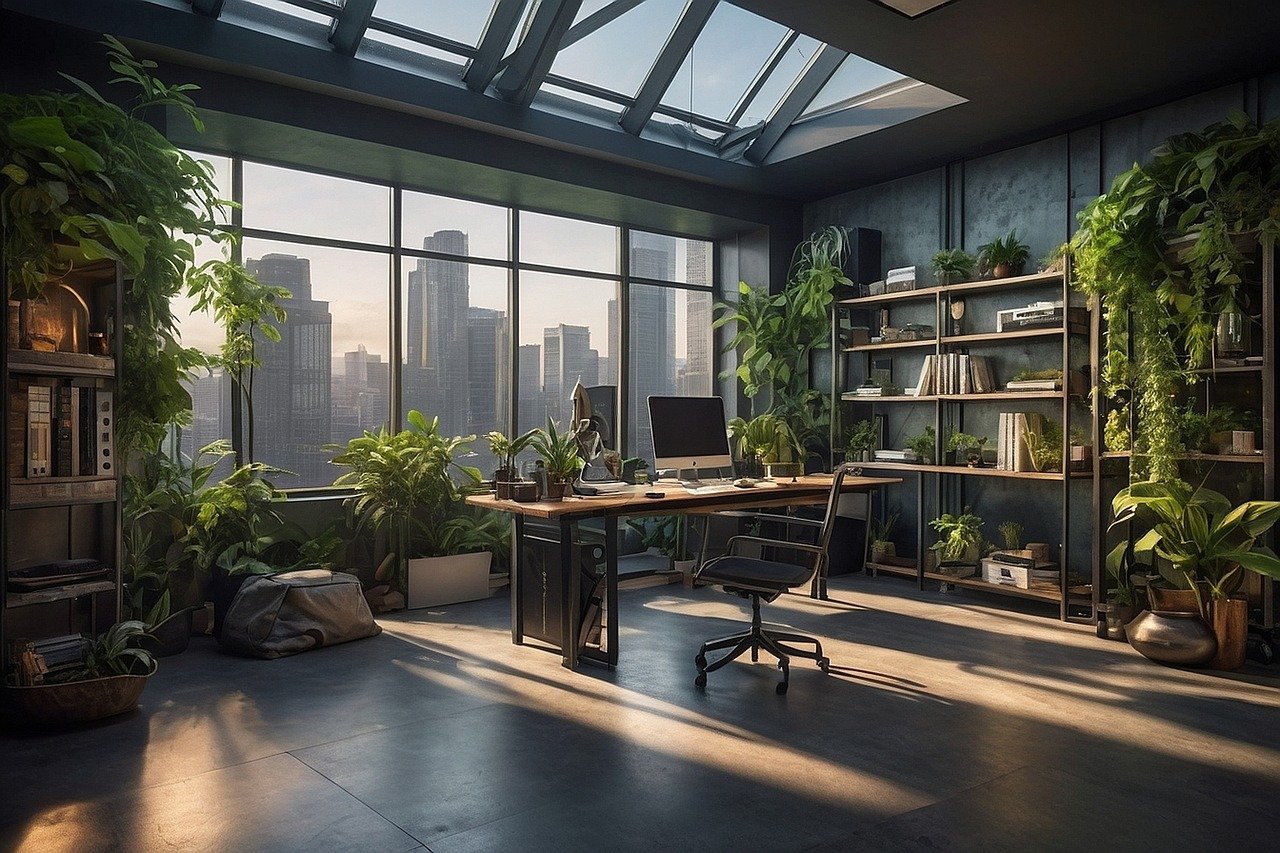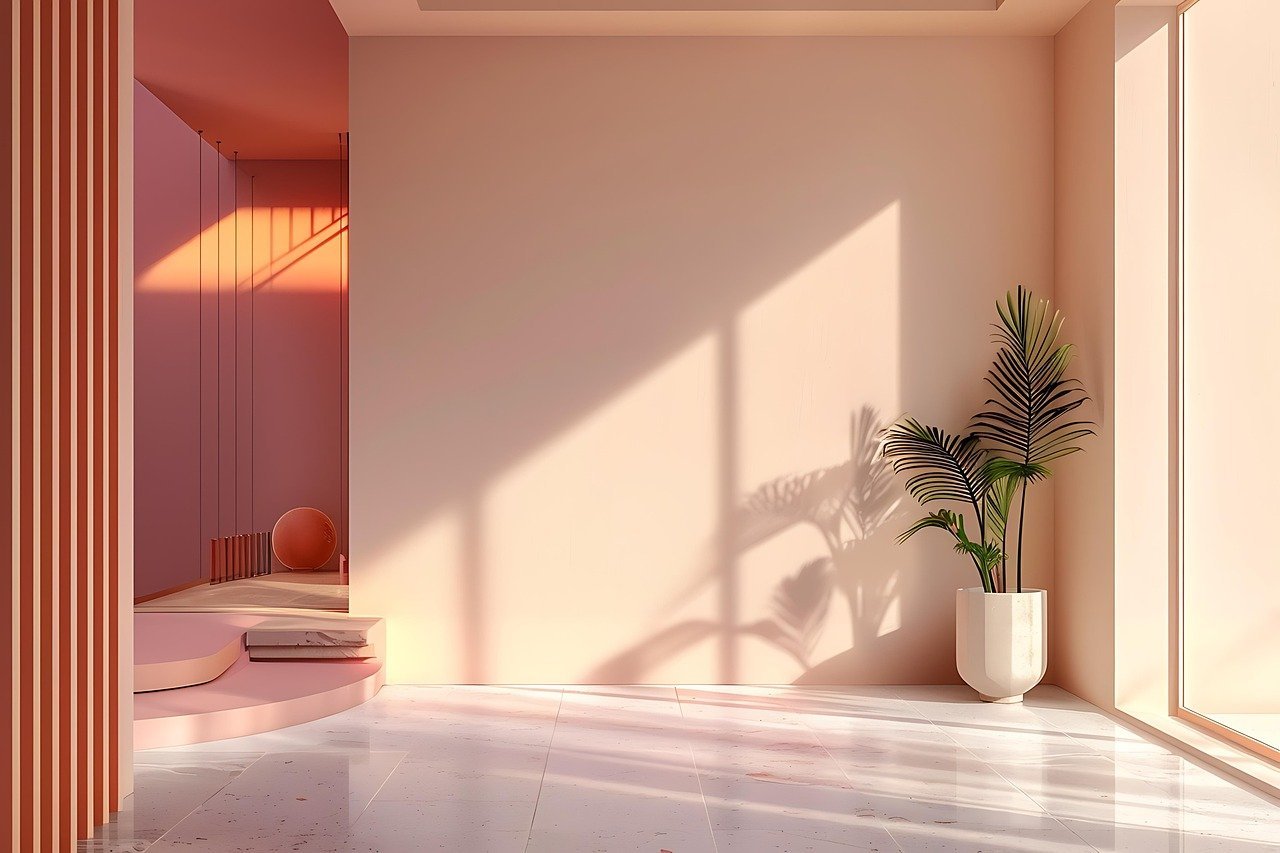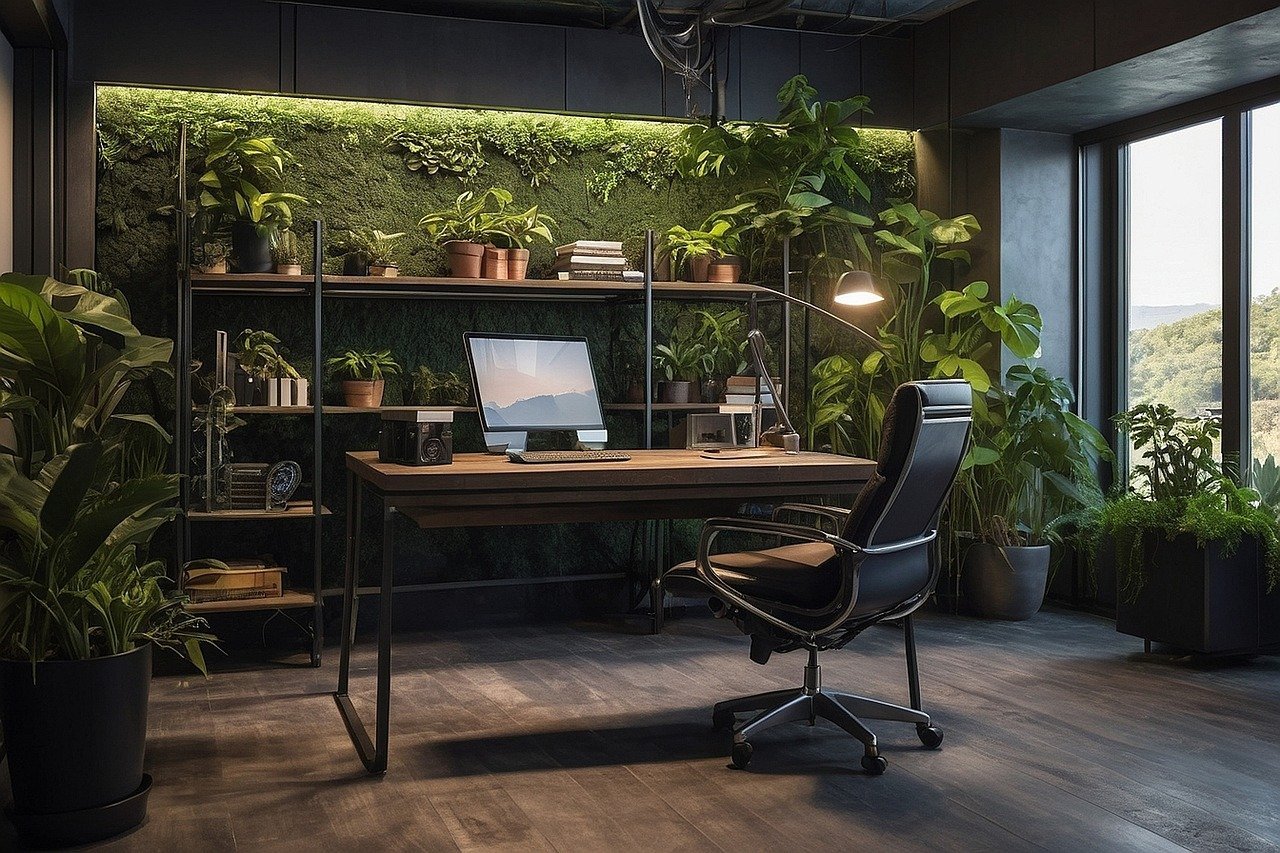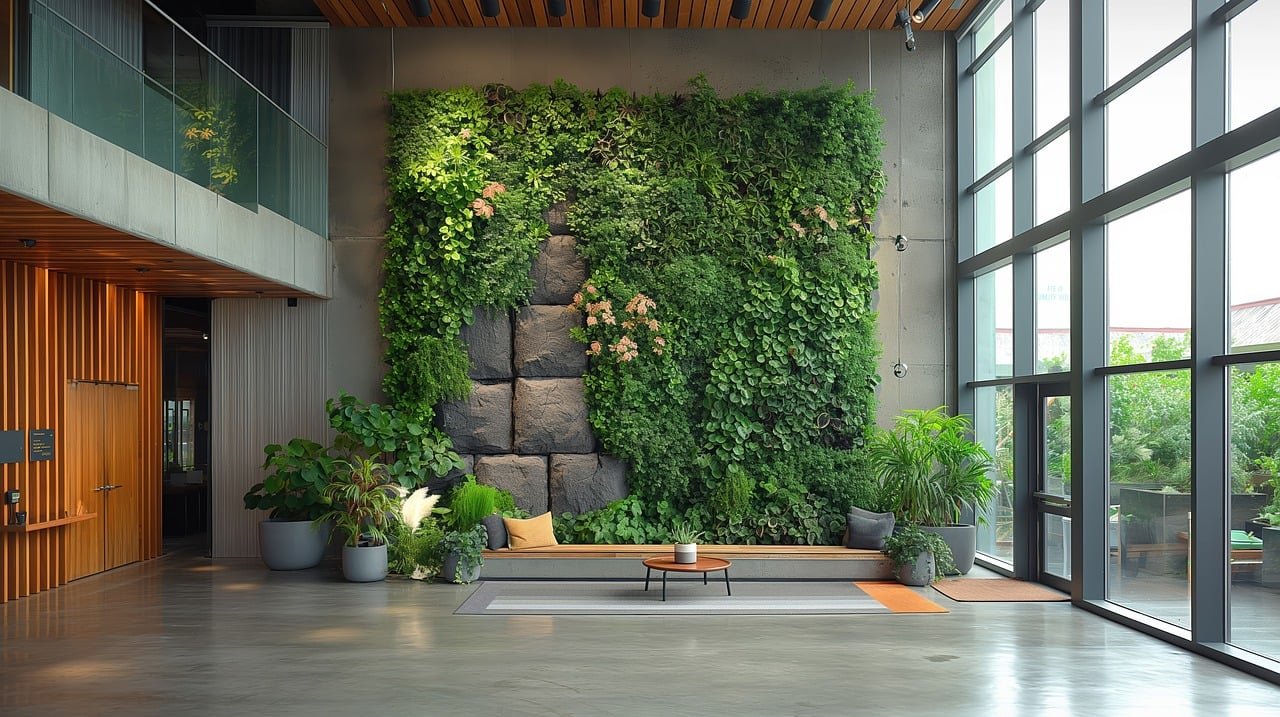Indoor Vertical Gardening

Indoor vertical gardening means growing plants on vertical surfaces indoors. This method is perfect for small spaces with limited room. Plants grow well on walls, shelves, or vertical planters. Indoor vertical gardening adds greenery to homes and improves indoor air quality. This saves floor space while making the interior space look beautiful. This is an eco-friendly way to enjoy gardening indoors all year.
Benefits of Indoor Vertical Gardens
- Indoor vertical gardens purify air, cleaning out dangerous toxins.
- It saves space and is very ideal for small living areas.
- They add beauty as well as greenery to a place’s inside.
- Vertical gardening contributes much to giving people a fresh, peaceful indoor ambiance.
- They are ideal for herb planting, flowers, or decorative plants.
- This means a healthy house that is attractive.
How to Start an Indoor Vertical Garden
Essential Tools and Materials for Vertical Gardening
Begin by selecting a sunny area for a garden. Use vertical planters, shelves, or wall-mounted containers for plants. Provide tools such as gloves, watering cans, and small gardening tools. Use lightweight soil and fertilizers for optimum growth of plants indoors. Choose small flowers, herbs, or succulents, which can thrive well and easily. Water your plants regularly and make sure that they are exposed to enough sunlight.
Choosing the Right Plants for Your Vertical Garden
Low-light plants such as ferns, pothos, and snake plants are good choices indoors. Herbs like basil, mint, and parsley can be grown quite easily. One can also try leafy greens like spinach and lettuce on vertical gardens. Use lightweight containers in supporting the plants and saving space. Pick the plants that grow well in your room’s light level. Herbs and vegetables provide fresh, healthy food for your family.
Step-by-Step Guide to Setting Up Your Vertical Garden
- Select a sunny wall or corner for your vertical garden.
- Use strong frames, shelves, or planters that will support the plants
- Select plants according to the light and space available.
- Use good soil and fertilizers to help the plants grow strong and healthy.
- Arrange plants in layers to allow for proper sunlight and watering.
- Water the plants at a regular schedule, but overwatering will damage plants.
- Check plants regularly for pests or problems to keep them healthy and happy.
Indoor Vertical Gardening Ideas for Your Home
Living Walls: A Statement for Your Living Room
Create a wall like living, placing nature inside your home’s living room. Make your wall bright and cheerful with colorful plants. Use fern, ivy, or pothos as they are low-maintenance. Add a wooden frame for elegant style. Living walls save space and improve air in households. The uniqueness of this idea makes your home modern, fresh, and green.
DIY Vertical Planters for Budget-Friendly Gardening
Build vertical planters using recycled wood, bottles, or old shelves. Paint your planters to fit the style of your home. Choose small plants like herbs, succulents, or flowering vines to grow. Use lightweight soil to keep your planters easy to move. Hang planters on walls or fences to save floor space. DIY planters are cheap, fun, and perfect for indoor gardening.
Vertical Gardens for Kitchen Herbs and Vegetables
Grow fresh herbs like basil, mint, and parsley in kitchens. Utilize vertical planters to save space and stay indoors, being organized. Plant small vegetables like spinach and lettuce as well as cherry tomatoes vertically. Hang some planters near windows, where there is proper sunlight and healthy growth in plants. Enjoy picking fresh ingredients for your meals right from your kitchen. Vertical gardens make cooking fun, fresh, and eco-friendly at home.
Maintenance Tips for Indoor Vertical Gardens

- Water your plants gently to avoid damaging the roots or overwatering.
- Employ drip irrigation systems to always water your plants evenly in a vertical garden.
- Regularly check for bugs and small insects on your plants.
- Make use of natural pest repellents that would keep your plants safe inside your house.
- Cut dead leaves so space can be allocated for new growth.
- Trim regularly to keep it neat and tidy in your vertical garden.
- Clean the planters and walls to prevent mold or harmful bacteria.
- Healthy maintenance keeps your indoor vertical garden beautiful and thriving.
Indoor Vertical Gardening for Beginners: Mistakes to Avoid
Overwatering or Underwatering Issues
Overwatering leads to rotting and death of roots, and underwatering makes them shriveled, weak, and poorly growing; thus, it is imperative to check the moisture of the soil often for the perfect balance. Make sure containers used have drainage holes to avoid water building up. Healthy and strong-growing plants result from proper watering.
Choosing Incompatible Plant Species
Growth and health may decline where incompatible plants are selected. Some need direct sunlight, and the others prefer shade. Ensure that plants in your garden have similar care needs in order to grow well. Mixing plants with different water needs causes stress for them. Before adding any plant to your garden, do research on each plant’s needs.
Lack of Proper Lighting and Ventilation
Without the right lights, the plants cannot develop strongly and healthily. Overly little light may result in weak plants. Ensure that the natural sun on your vertical garden is adequate. Poor ventilation may cause your plants to turn moldy or not healthy. Good air circulation makes your plants refreshing and bright.
Advanced Indoor Vertical Gardening Techniques
Hydroponic Systems for Vertical Gardens
Hydroponic systems produce plants without soil support. Instead, these systems use water with nutrients to feed plants. Hydroponic vertical gardens are ideal for growing indoors. Hydroponics makes it possible to grow herbs, vegetables, and flowers. Such techniques save space while promoting healthier plant growth.
Smart Gardening with Vertical Planters
Smart gardening uses technology to help plants grow better. Vertical planters save space and make gardening more efficient. Use timers to water your plants at the right times. Smart sensors track moisture levels and prevent overwatering plants. These tools help you care for plants even when busy.
Incorporating Technology for Automated Care
Technology automates care for plants, which saves time and energy. Automated irrigation will water the plants, neither letting them get too wet nor dry. Smart sensors will monitor the light, temperature, and humidity for the plants. Timers and applications help track plant care and needs. Automated care keeps plants healthy even when you’re away.
Indoor Vertical Gardening Inspiration: Top Trends in 2024

Eco-Friendly Gardening Solutions
Eco-friendly gardening uses natural ways of protecting the environment. Materials for planters can be recycled to reduce wastes and pollutants. Solar-powered lights brighten up vertical gardens in non-electric ways. Organic fertilizers nourish plants while these are safe for nature. Sustainable gardening practices mean beautiful spaces and the protection of ecosystems.
Vertical Gardening for Small Apartments
Vertical gardening is ideal for small apartments with limited space. Use wall-mounted planters to save floor space and grow plants. Grow herbs such as basil, parsley, and mint in small containers. Vertical gardens add beauty to apartments without taking up space. You can easily grow vegetables like lettuce and spinach indoors.
Combining Art and Gardening for Unique Designs
Combine art and gardening for fantastic, beautiful designs. Colorful pots and planters will adorn your garden. Attach plants to walls or trees to give a creative look. Paint on the walls around the garden bright colors for added beauty. Art and gardening combined together bring immense delight into your space.
Conclusion
Indoor vertical gardening is a fun way to add greenery. It saves space, freshens and beautifies your home. Many herbs, succulents, and leafy greens could be grown indoors. Regular care, such as watering, trimming, and cleaning, can keep the garden healthy. Vertical gardens can purify the air, brighten up a space, and give a peaceful feeling. A place for small homes, kitchens, or even living rooms, vertical gardens are perfect. Using the right plants and tools, people can start. This is an eco-friendly hobby that will connect nature within indoor spaces. With creativity and care, your home can be turned into a green haven!
FAQs About Indoor Vertical Gardening
Can I Grow Vegetables Indoors Vertically?
Yes, you can grow vegetables indoors using vertical gardening. Use vertical planters or shelves to save space and grow.
How Much Maintenance Does a Vertical Garden Need?
A vertical garden needs regular watering, pruning, and cleaning. Check for pests and ensure proper lighting for healthy growth.
Which Plants Grow Best in Indoor Vertical Gardens?
A vertical garden needs regular watering, pruning, and cleaning. Check for pests and ensure proper lighting for healthy growth.


